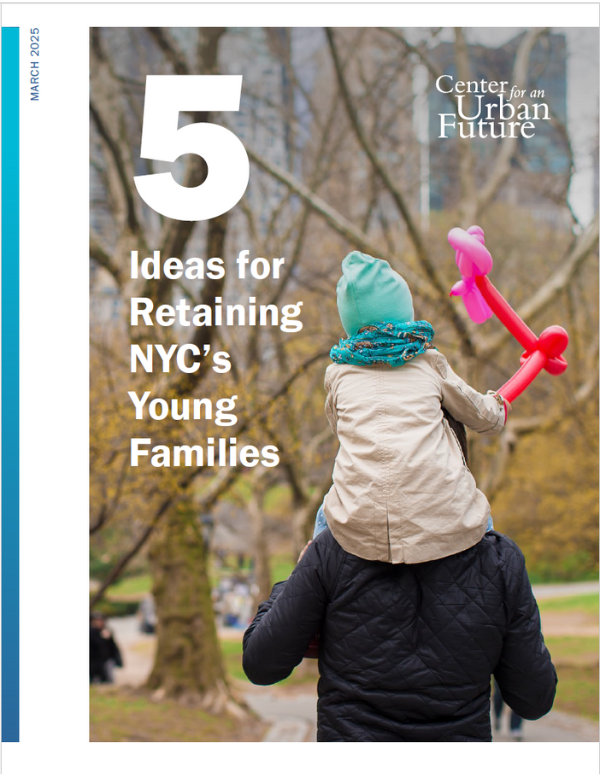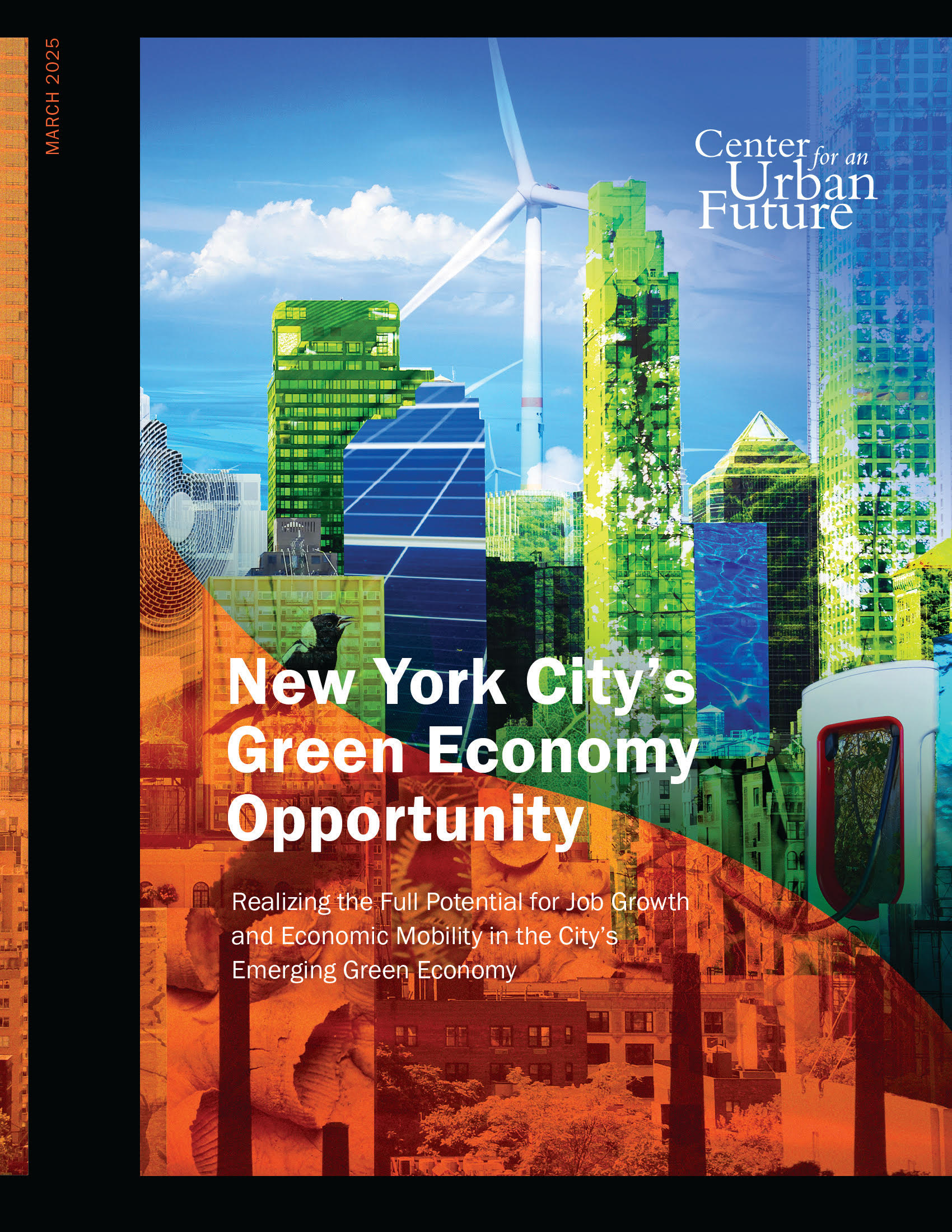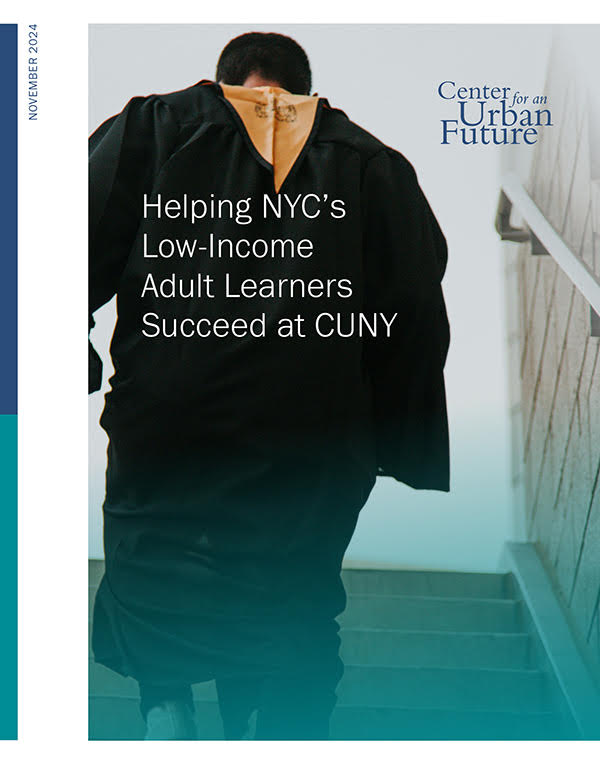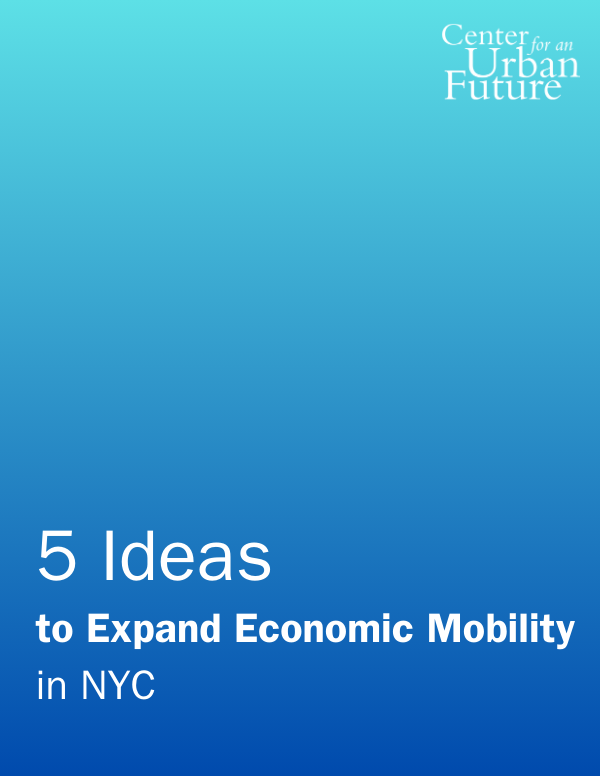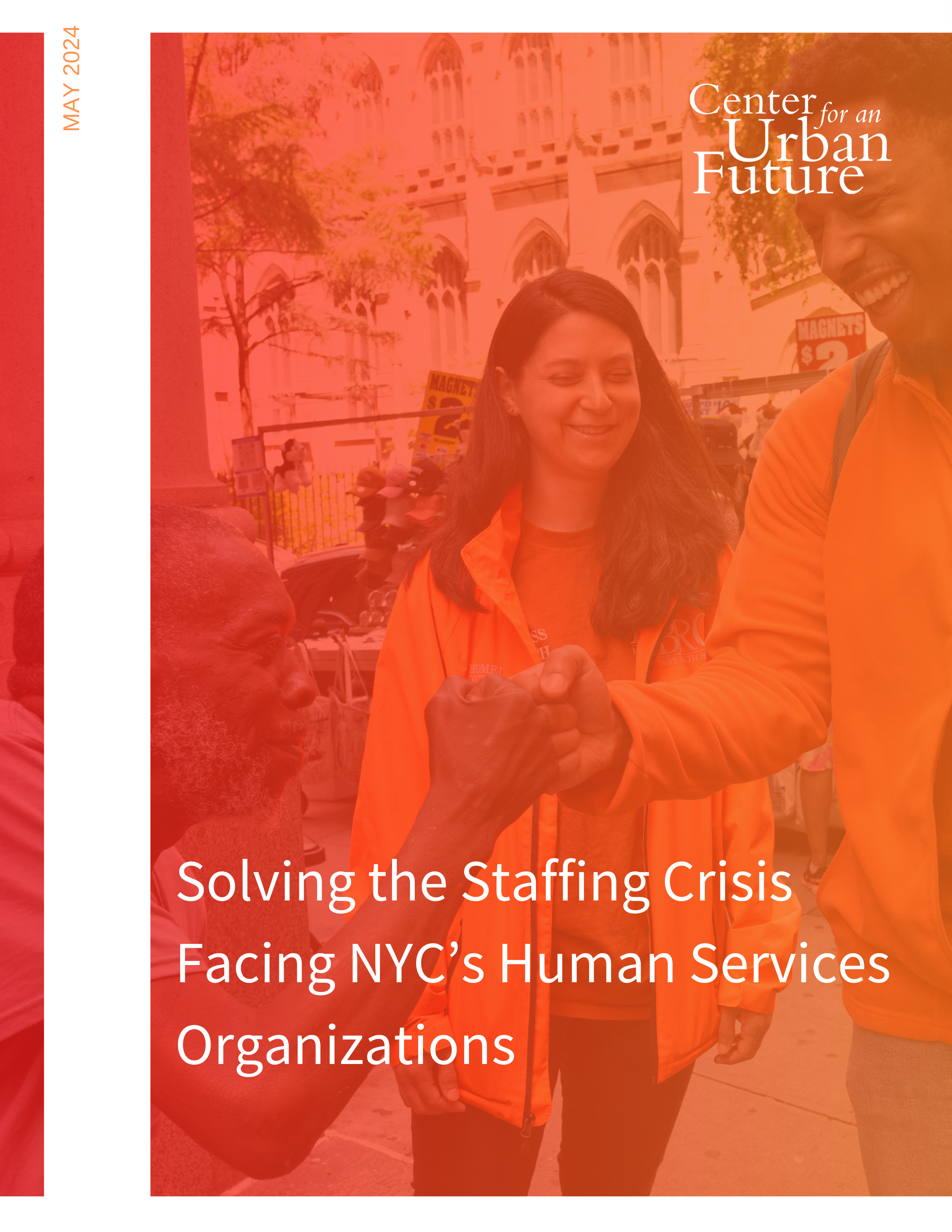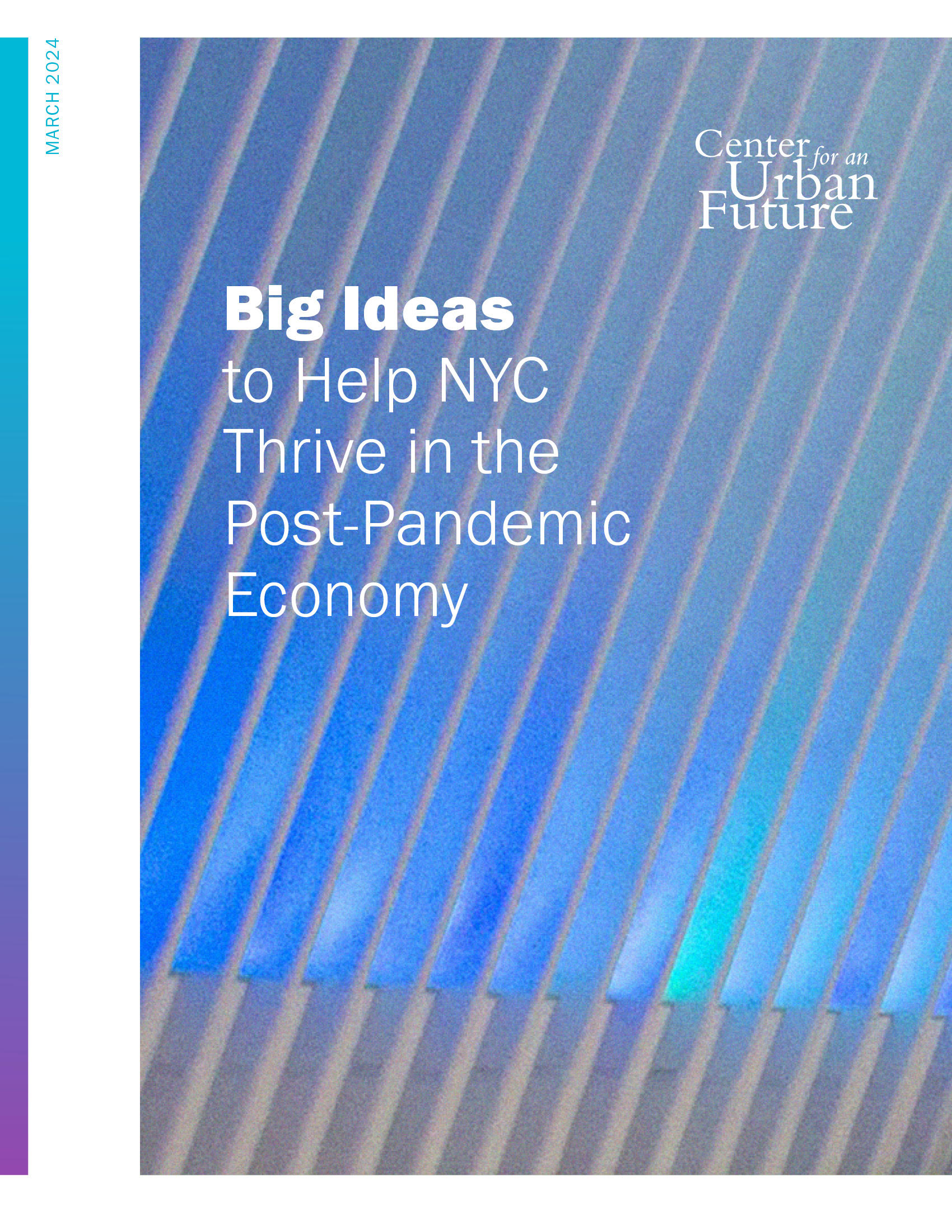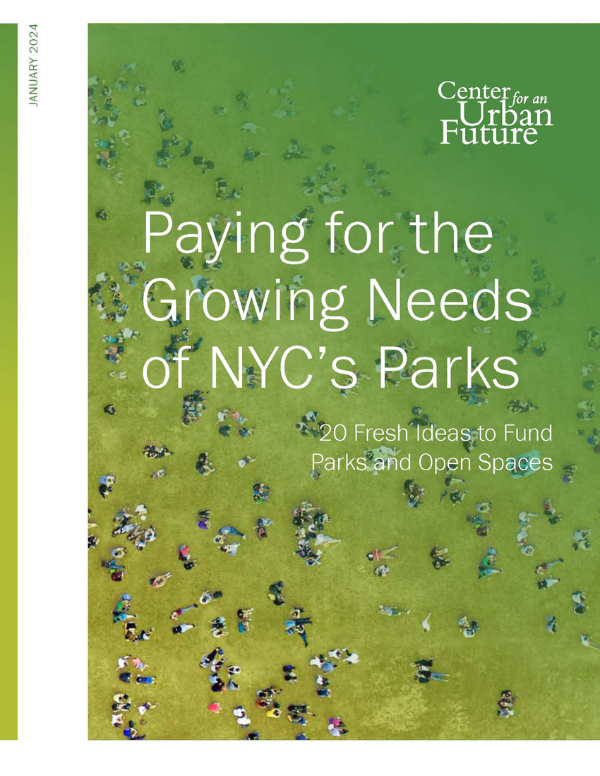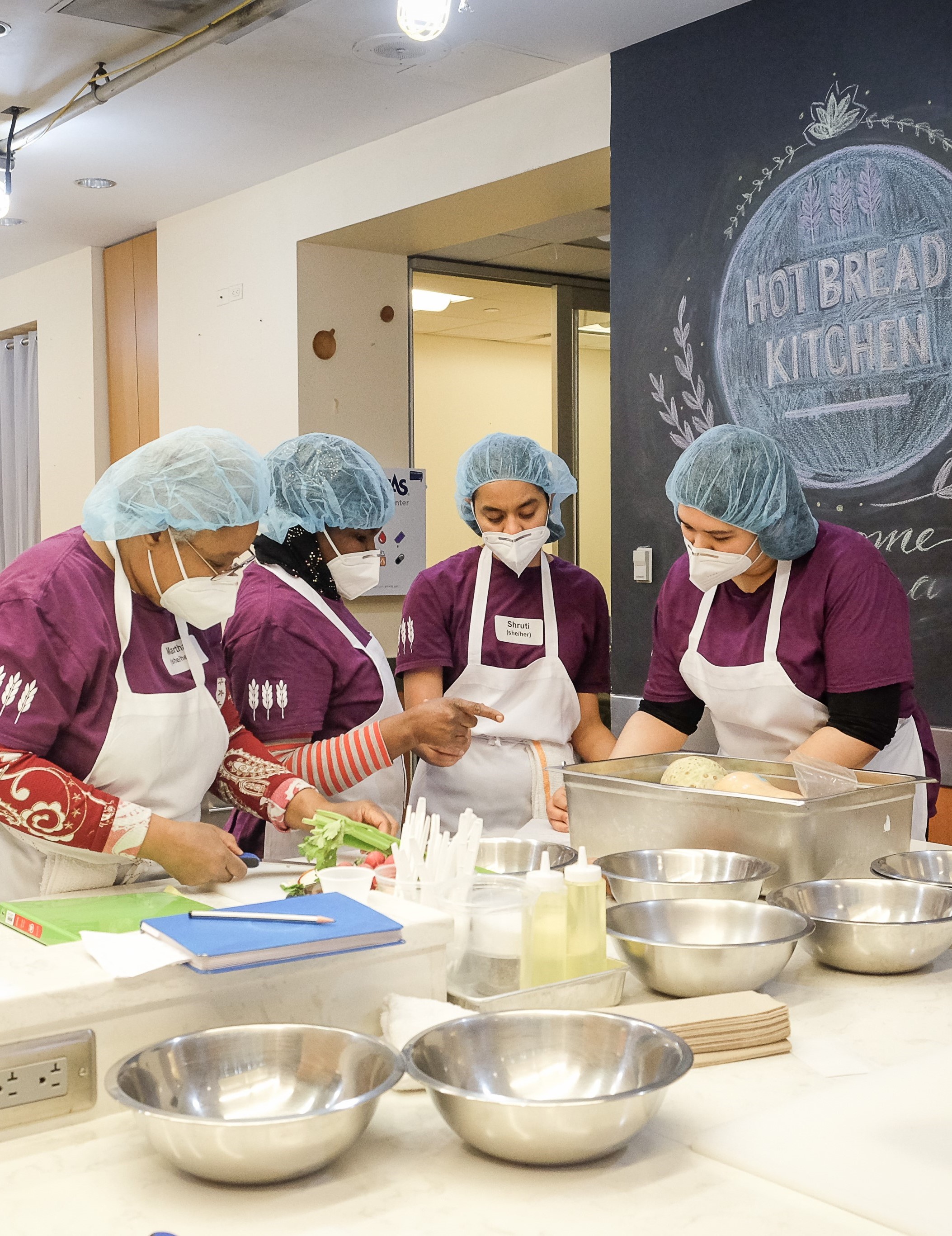It’s not yet clear how much of an effect a Trump administration will have on New York City, but it’s a good bet that New York will receive even less help from Washington to address its many challenges. In this environment, city leaders will need to develop their own local policy solutions if New York is to make progress in a variety of areas, from closing educational and workforce disparities to tackling the affordable housing crisis and bolstering small businesses. New York will need to innovate, scale up what’s working and jettison some of what’s not, embrace public-private partnerships, and develop new revenue sources.
In the months ahead, the Center for an Urban Future will be putting forward a variety of actionable policy ideas for city officials to do just this—particularly around creating a stronger and more inclusive economy in New York, and expanding economic mobility for all New Yorkers. As we start the year, we offer up the following fifteen policy ideas that CUF wrote about in 2024 that we think are worth considering at a time when New York needs good local ideas more than ever.
- Establish CUNY Fresh Start, an initiative to reduce or eliminate unpaid balances up to $1,000 to help more adult learners to re-enroll at CUNY and complete their degree.
Many CUNY students who drop out before earning a degree end up owing the university money for an unpaid bill. Our research shows that these unpaid balances, even those as little as $250, are a major factor in preventing students from reenrolling in CUNY. Unpaid balances can also bar students from persisting across semesters. To help more adult learners return to CUNY and complete their credentials, and boost persistence, the city and state should partner on a Fresh Start initiative that would clear an unpaid balance of up to $1,000 for CUNY students who started but have not completed their degree so that they can re-enroll and finish their credential.
- Create a competitive Scale-Up Challenge Fund for nonprofit economic mobility programs that are working.
New York City is home to many nonprofit programs that are achieving real results in expanding economic mobility—from workforce training that consistently leads to major income gains to work-based learning programs that help participants land good jobs after college to alternative-to-college fellowships and apprenticeships that enable high school graduates to access well-paying careers. But too many of these nonprofit-run initiatives are succeeding at a very small-scale, serving only a few dozen or a few hundred people a year. Scaling up some of these proven nonprofit initiatives would have a meaningful impact on the lives and economic trajectories of thousands of New Yorkers. To address this untapped opportunity, city leaders should establish a Scale Up Challenge Fund—modeled on the Obama administration’s Race to the Top programs for improving education outcomes. Nonprofits would compete to receive grants from the Scale Up Challenge Fund, which would include flexible city dollars kept separate from standard city contracts. An independent judging panel would review applications and provide funds to a small number of programs each year that can demonstrate their effectiveness in boosting career outcomes and expanding economic mobility. Ideally, each award would be for a three-year period, ensuring that the nonprofits are able to plan for growth.
- Boost NYC's minority-owned small businesses by launching the NYC Minority Business Accelerator.
There are roughly 20,000 Black- and Latino-owned businesses across the five boroughs, but far too few of them ever grow from small businesses into medium-sized or large businesses. Indeed, the city’s average minority-owned employer business generates less than half the revenue—45 percent—of the average white-owned employer business. City leaders can help more of the city’s minority entrepreneurs to get to the next level—while also helping to close the glaring racial wealth—by replicating an innovative program in Cincinnati, the Minority Business Accelerator (CMBA). Since 2003, the CMBA has worked to help several dozen minority-owned small businesses scale up by providing them with strong individualized business strategy and support, access to capital to finance expansion, and, perhaps most importantly, commitments from major companies in the region to direct significantly more procurement dollars their way. The program isn’t focused on helping every small business develop a growth strategy; instead, it identifies a relatively small group of established minority-owned businesses that are poised for growth, but which might not realize that promise without strategic interventions.
- Initiate a modest expansion of restaurants, cafes, and other concessions in parks that enhance the visitor experience while generating funding for parks citywide.
There are surprisingly few restaurants, cafes, ice cream shops, and other concessions in parks across the five boroughs. Where these concessions do exist, like the Shake Shack in Madison Square Park, the Breads Bakery in Bryant Park, the Le Pain Quotidien next to Sheep’s Meadow in Central Park, and the seasonal Fornino pizza restaurant on Pier 6 in Brooklyn Bridge Park, they invariably enhance the experience of parkgoers. Restaurants and cafes are also a fixture of many of the most adored parks in Paris, London, and numerous other cities. A modest expansion of parks concessions—and creative new ones, like year-round spas in existing pool houses—could make New York’s parks even more appealing while providing much-needed revenues for parks. Indeed, while concessions are NYC Parks’ largest source of revenue, concessions revenue has flatlined just above $42 million for more than a decade—and has declined 25 percent since 2012, after adjusting for inflation. To ensure that parks in underserved communities benefit, city leaders should establish an 80-20 split for all future revenue from new parks concessions. The larger share (80 percent) would remain with the park hosting the new concession and the remainder (20 percent) allocated to a fund to support parks with the greatest needs, in particular those in less affluent communities that may not otherwise be able to support revenue-generating concessions. The revenues from these new concessions should stay with parks—and not get funneled into the city’s general fund, as the lion’s share of existing parks concessions do right now. This can be accomplished by leveraging the existing conservancy model, in which concessionaires enter a contract with a nonprofit intermediary that retains a significant share of the revenues.
- Expand CUNY's highly successful but small-scale ACE program to help more senior college students succeed.
Even after years of steady improvements, today only 36 percent of full-time students at CUNY’s senior colleges graduate in four years. For Black and Hispanic students, the graduation rate falls to 27.5 percent. Fortunately, CUNY ACE is beginning to change this. Like the ASAP program for community college students, ACE has boosted graduation rates by over 40 percent at CUNY’s John Jay College. However, ACE has significant room to expand. However, limited funding has severely restricted the program’s reach. ACE has served just 3 percent of the 93,305 bachelor’s degree-seeking undergraduates enrolled full-time at CUNY’s senior colleges today. By comparison, CUNY ASAP is now serving about 25,000 students each year, or nearly 30 percent. The mayor and City Council should baseline funding for CUNY ACE in the FY 2025 budget and invest in growing CUNY ACE over the next two years.
- Launch New York City’s first annual five-borough cultural festival.
New York is home to a rich diversity of annual arts and culture events, from Lunar New Year festivals and the West Indian Day Parade to the Tribeca Film Festival and the Armory Show art fair. But New York still doesn’t have a globally renowned citywide arts and culture festival on the scale of South by Southwest in Austin, the Venice Biennale, or the Edinburgh Fringe Festival. New York City deserves its own turn in the global spotlight. Creating a citywide cultural festival of global proportions would give locals and visitors a powerful new reason to explore the five boroughs each year, while sharpening the city’s creative edge amid an increasingly packed international calendar of must-do experiences. By attracting new audiences, facilitating collaboration, easing red tape, and directly supporting artists, this major new festival would provide a needed boost to the city’s arts and culture sector—a vital part of the city’s economy that still has a way to go fully recover from the pandemic. New York policymakers should work with cultural and community partners citywide to cultivate an annual cultural festival of unprecedented size, scale, and significance. The key first step is mayoral leadership to make this idea a priority, identify a target week in the annual calendar, and enlist a small group of cultural leaders and civic-minded entrepreneurs to help develop the festival’s operational structure, agenda, and logistics.
- Launch three major challenge-based AI procurements to make New York a more livable city and bolster the city’s emerging AI sector.
To anchor and grow the city’s emerging AI sector, New York should launch three major new challenge-based AI procurement competitions, where the prize is a multimillion-dollar contract to deploy an AI-powered solution at scale. Developed in partnership with the New York City Economic Development Corporation and relevant city agencies, these procurement challenges should start with a robust pilot phase and scale toward citywide deployment, with key outcomes-based milestones that align pay with performance—attracting best-in-class teams with the prospect of significant ongoing revenue, while reducing the city’s exposure if a promising pilot fails to succeed. These challenges would be aggressively marketed to start-ups already based in the city, but open to teams from anywhere, providing local founders with a major new business opportunity while helping to recruit highly qualified teams from around the world. A challenge of this kind could help the city address some of its most difficult challenges, while generating publicity globally for New York as a leading AI hub, signaling to the city’s AI builders that New York is serious about creating opportunities for them to succeed at scale, and giving winning companies a case study that they could use to generate additional business from other governments or private sector clients. The city should start with three areas of significant need where AI could generate substantial benefits: boosting housing affordability; making streets smarter and safer; and strengthening social services.
- Establish a talent pipeline initiative for creative economy careers.
Over the past decade, the extensive focus on the need to diversify the city's tech workforce has sparked a range of city-supported and privately funded programs aimed at expanding pathways into technology-powered careers. But tech isn’t the only part of New York’s economy that could benefit from new city-led efforts to develop pipelines into middle- and high-wage jobs that have been growing in recent years. Just as city leaders established the Tech Talent Pipeline a decade ago to expand access to tech careers, it should do the same now for the city’s vibrant creative economy. The creative economy—including advertising, film and tv, fashion, architecture and design, and independent artists—employs more than 300,000 New Yorkers, has grown significantly over the past two decades, and pays well above the citywide median wage. But, like the tech sector, the creative industries have a long way to go before they look like New York City. A 2024 report by the Center for an Urban Future found that Black workers hold fewer than 8 percent of the city’s advertising jobs, while comprising nearly 21 percent of the city’s total workforce. Likewise, Black New Yorkers hold just 8 percent of the jobs in publishing, 8 percent in architecture, and 9 percent in film and tv. To change this, the city should launch a Creative Economy Talent Pipeline initiative within the Mayor’s Office of Talent and Workforce Development, aimed at boosting career pathways for underrepresented New Yorkers into the city’s creative sector.
- Tap CUNY’s students to build a greener university.
Achieving New York City’s ambitious climate goals will require a massive, citywide effort to reduce greenhouse gas emissions from buildings—including city-owned buildings where significantly more progress is needed. City leaders should start with new investments to decarbonize the nearly 300 buildings that make up the City University of New York, and put CUNY students to work achieving this. By doing so, the city will not only accelerate progress toward its climate goals, but also help prepare thousands of mostly low-income, first-generation college students for the green economy jobs that are coming online now and in the years ahead. While the university has been making progress—even with woefully insufficient capital funding—there’s a lot of work to do to bring CUNY into compliance with the city’s net-zero goals. Most of CUNY’s buildings are over 50 years old and reliant on fossil fuels for heating and cooling. At the same time, CUNY is home to a secret weapon in the fight against climate change: its students, faculty, and staff. CUNY is home to cutting-edge research labs and an incredible talent pool with expertise in everything from clean energy HVAC to low-carbon architecture and sustainability planning. To take advantage of this moment, the mayor should spearhead a major new initiative to create a greener CUNY, and launch a first-of-its-kind program to harness CUNY’s students to implement these system-wide upgrades. This new initiative can succeed in putting CUNY students on the path to green economy careers, while transforming the nation’s most powerful economic mobility institution into its greenest one, too.
- Close the tech opportunity gap by expanding the CUNY CITE program, which trains future NYC Public School teachers to integrate computing education in their classrooms.
Nearly one-third of new teachers hired by New York City Public Schools each year graduate from CUNY. However, fewer than 5 percent of all new teachers are prepared to teach computational thinking—the ability to ask questions, organize data, and solve problems with computers. This training gap is preventing many students in New York City public schools—in particular, Black and Hispanic students, low-income students, and girls—from receiving early encouragement in computing education and from pursuing computer science in high school, college, and careers. To help close these equity gaps, the city should invest in CUNY’s promising Computing Integrated Teacher Education (CITE) program, which trains future teachers to use computing concepts in all subjects and at every grade level. With additional support, this program can expand to reach all 11,000 aspiring teachers enrolled at CUNY every year.
- Make it easier for private entities to care for, maintain, and fund parks.
With New Yorkers using parks and open spaces more than ever, their maintenance needs are growing—and city investment has failed to keep pace. While city leaders should step up with greater funding, they should also make it far easier for nonprofit organizations and community groups to help care for these spaces. Indeed, community groups from the Bronx to the Rockaways want to raise funds, organize volunteers, apply for discretionary funding to support public realm maintenance and care, and support vibrant, clean, safe public spaces just like those enjoyed in better-resourced communities. It’s a win-win for the city and its residents. The problem is that lawyers in the city’s Law Department are not instructed to see it that way. On the contrary, lengthy and sometimes contradictory legal reviews make securing the necessary agreements between community-based organizations and city agencies an arduous slog, costing nonprofits and volunteer groups time and money and dissuading others from even trying to forge agreements to help care for their parks in the first place. Overhauling these policies and processes would not cost the city anything while unlocking significant opportunities to improve conditions in smaller and under-resourced parks. A pervasive culture of “no” in the Law Department and within other agency legal teams, the absence of a handbook for community groups to follow, and challenges raising start-up capital to cover city-imposed costs like insurance, are stymying the ability of local groups to care for their local parks and open spaces. The mayor should instruct the city’s lawyers to enable, rather than stifle, the public-private partnerships crucial to maintaining and enlivening the city’s parks and open spaces.
- Establish a Pathways to Human Services Initiative to alleviate the human services vacancy crisis.
New York City's human services sector has been experiencing a staff vacancy crisis, in which the average human services nonprofit has more than 15 percent of its positions vacant, as well as unsustainably high levels of staff turnover. One opportunity to help alleviate this challenge is by creating a new Pathways to Human Services Initiative, a major effort to strengthen the education and training pipelines into the human services sector. The initiative would include boosting the Human Services Career Advancement Scholarship at CUNY, which started in 2021 to reach about 400 people, but should expand to reach 1,000 more. It would also include designing a CUNY Human Services Fellowship, like CUNY’s Civil Service Pathways Fellowship, to build more pipelines from CUNY to human services careers and fill positions with high vacancies and turnover; and launching a Human Services Training Accelerator with stipends for on-the-job training to help fill in-demand positions in human services organizations.
- Co-develop a dozen more affordable housing developments with new public libraries.
There are precious few sites to build the housing New York City so badly needs. At the same time, dozens of the city’s aging branch libraries are in disrepair and too small or poorly configured to deliver the full suite of resources libraries so powerfully provide when equipped with functional spaces. In a little over a year, the city has completed two projects that address both of these needs: the replacement of an aging branch library and the development of affordable housing. These two projects—in Sunset Park and Inwood—have created hundreds of units of much-needed new housing while giving communities an expanded and modernized branch library. But there is an opportunity to replicate this model in many more communities across the city. CUF has already identified more than two dozen branch libraries that require major upgrades and are sited in places where zoning already allows new housing to be built atop a modernized and expanded library. Given the severity of the housing crisis, city leaders should go bigger and bolder with this timely idea and commit to at least a dozen new co-located library and housing developments over the next five years.
- Establish CUNY Flex to help more of CUNY's low-income adult learners complete degrees.
Nearly one-quarter of all degree-seeking undergraduate students at CUNY are over age 25, but too many of these adult learners never get to the college finish line. CUNY already has several nationally-recognized programs that help students persist through college, including the nationally recognized CUNY ASAP, which provides students with evidence-based wraparound supports that help them succeed at college, including a dedicated advisor, a free MetroCard, and money for textbooks. However, these programs require full-time enrollment, shutting out the majority of adult learners (55.4 percent) who study part-time. Mayor Adams and the City Council should help tackle this gap by launching a new wraparound services initiative for part-time learners—potentially called CUNY Flex—which would be designed to replicate the evidence-based supports of CUNY ASAP for part-time students, with a focus on returning students and other adult learners.
- Expand support for immigrant-serving literacy and workforce programs.
In addition to protecting the tens of thousands of migrants living in New York City today from mass deportation and other punitive measures imposed by the incoming Trump administration, city leaders should strengthen the ecosystem of organizations that are helping immigrant New Yorkers—including the most recent arrivals seeking asylum—to prepare for the workforce. A recent CUF report showed that too few resources have been committed to the literacy and training infrastructure that will help this latest wave of newcomers become productive New Yorkers. Indeed, thirteen of the nonprofits we surveyed—more than half of those we reached out to—said that their programs have waiting lists, with each commonly turning away hundreds of people. One program at Lehman College, which assists immigrant nurses with improving their English language skills and gaining certification and employment, had had 600 applicants for 20 spots. New Immigrant Community Empowerment, a Jackson Heights organization, reported a waiting list of between 300 and 400 people for the basic classes needed to be eligible for work on construction sites. The mayor and City Council and Adams should provide a budget boost to adult literacy programs and ensure that new RFPs support joint ESOL-job training programs run by CUNY, the city’s public libraries, and nonprofit training and literacy assistance organizations.
To learn more about the 15 ideas featured in this report, check out the following CUF publications:


